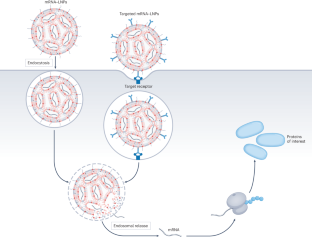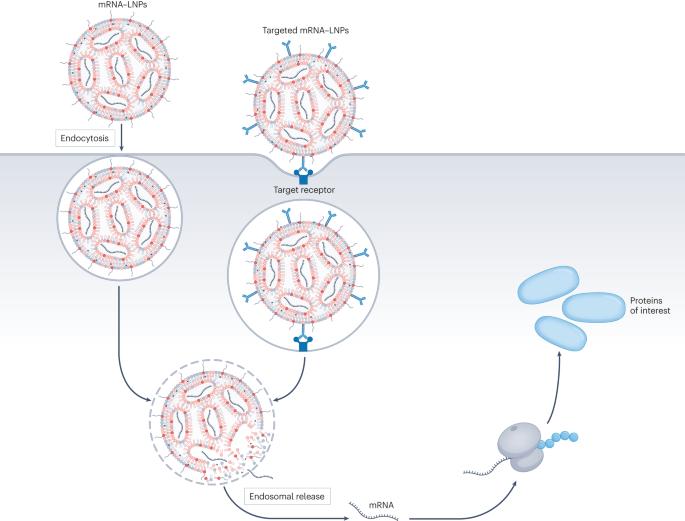用mRNA-lipid纳米颗粒靶向癌症:主要考虑因素和未来前景。
IF 82.2
1区 医学
Q1 ONCOLOGY
引用次数: 0
摘要
利用mRNA-lipid纳米颗粒(LNPs)治疗癌症患者一直是一个正在进行的研究领域,在这些多功能纳米颗粒成功用作新冠肺炎疫苗之前就已经开始了。目前,正在努力利用该平台进行肿瘤治疗,主要集中于靶向多种新抗原的癌症疫苗或直接瘤内注射编码促炎细胞因子的mRNA-LNP。在这篇综述中,我们描述了在肿瘤学应用中使用mRNA LNP的机会,并讨论了将这些纳米颗粒的临床前研究结果成功转化为临床的挑战。考虑到生理、技术和制造方面的挑战,我们批判性地评估了各种信使核糖核酸LNP靶向和递送策略的潜力。我们在最适合每种方法的潜在临床应用背景下探索这些方法,并强调目前实现这些应用需要解决的障碍。最后,我们提供了临床前和临床研究的见解,这些研究正导致这个强大的平台被认为是肿瘤学治疗的下一个前沿。本文章由计算机程序翻译,如有差异,请以英文原文为准。


Targeting cancer with mRNA–lipid nanoparticles: key considerations and future prospects
Harnessing mRNA–lipid nanoparticles (LNPs) to treat patients with cancer has been an ongoing research area that started before these versatile nanoparticles were successfully used as COVID-19 vaccines. Currently, efforts are underway to harness this platform for oncology therapeutics, mainly focusing on cancer vaccines targeting multiple neoantigens or direct intratumoural injections of mRNA–LNPs encoding pro-inflammatory cytokines. In this Review, we describe the opportunities of using mRNA–LNPs in oncology applications and discuss the challenges for successfully translating the findings of preclinical studies of these nanoparticles into the clinic. We critically appraise the potential of various mRNA–LNP targeting and delivery strategies, considering physiological, technological and manufacturing challenges. We explore these approaches in the context of the potential clinical applications best suited to each approach and highlight the obstacles that currently need to be addressed to achieve these applications. Finally, we provide insights from preclinical and clinical studies that are leading to this powerful platform being considered the next frontier in oncology treatment. In oncology, mRNA–lipid nanoparticles (LNPs) have been used either to achieve intratumoural expression of immune-stimulating cytokine combinations or as cancer vaccines, and new strategies are in development to enable the selective delivery of payloads into cancer cells previously considered unreachable. The authors of this Review present various approaches for delivering mRNA–LNPs to tumours and discuss improvements that will improve the selective targeting of cancer cells with mRNA–LNPs.
求助全文
通过发布文献求助,成功后即可免费获取论文全文。
去求助
来源期刊
CiteScore
99.40
自引率
0.40%
发文量
114
审稿时长
6-12 weeks
期刊介绍:
Nature Reviews publishes clinical content authored by internationally renowned clinical academics and researchers, catering to readers in the medical sciences at postgraduate levels and beyond. Although targeted at practicing doctors, researchers, and academics within specific specialties, the aim is to ensure accessibility for readers across various medical disciplines. The journal features in-depth Reviews offering authoritative and current information, contextualizing topics within the history and development of a field. Perspectives, News & Views articles, and the Research Highlights section provide topical discussions, opinions, and filtered primary research from diverse medical journals.

 求助内容:
求助内容: 应助结果提醒方式:
应助结果提醒方式:


